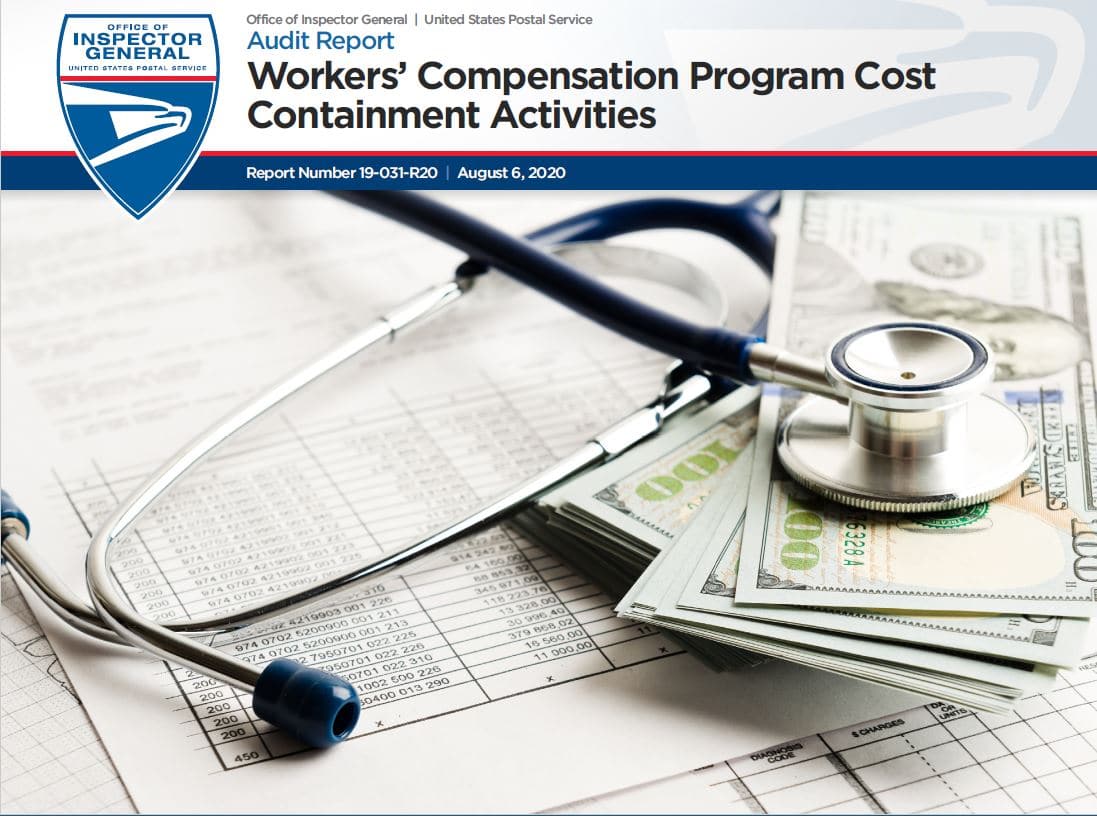Objective
The Federal Employees’ Compensation Act (FECA) program provides coverage for and assistance to about 2.6 million federal civilian and Postal Service employees who have sustained work-related injuries or disease by providing appropriate monetary and medical benefits and assistance in returning to work. The modern FECA program was created in 1916 with the overall intention of bringing protections offered to federal employees in line with those offered to state employees and provide workers’ compensation coverage to all federal employees regardless of occupation.
The U.S. Department of Labor’s (DOL) Office of Workers’ Compensation Programs (OWCP) has the exclusive authority to administer, implement, and enforce FECA, including paying claims on behalf of injured employees. In fiscal year (FY) 2019, the DOL OWCP provided about $3 billion in benefits to over 200,000 workers and survivors in the federal government. However, Postal Service workers accounted for more than 50 percent of all workers’ compensation cases across the federal government. The Postal Service reimburses the DOL for its workers’ compensation claim costs, including administrative fees, through a process known as chargeback billings.
Containing OWCP costs is of critical importance to the Postal Service. As of September 30, 2019, the estimated present value of the Postal Service workers’ compensation liability was about $19 billion. Discount (interest) rates, which are out of Postal Service management’s control, determine the present value of the estimated liability. As discount rates change, the resulting differences in liability are recorded as operating expenses in the financial statements and can be dramatic. In FY 2019, workers’ compensation operating expenses totaled about $3.5 billion. The portion of those expenses attributed to the effect of discount rate changes totaled about $2.4 billion (67 percent), which contributed to a $3.5 billion increase in total operating expenses compared to FY 2018.
The Postal Service’s cash portion of annual workers’ compensation costs marginally decreased from about $1.36 billion to about $1.35 billion (1 percent) between July 2013 and June 2019. Although annual costs decreased by 1 percent, the administrative fee portion of the costs increased from $69 million to $81 million (17.6 percent) during the same period. Further, the number of Postal Service employees (career and non-career) increased from about 618,000 in FY 2014 to about 633,000 in FY 2019 – a 2 percent increase.
FECA claimants who are eligible for federal retirement or disability annuities may chose to remain in the FECA program for the entire duration of their disability, rather than move to retirement. As of June 2019, the Postal Service had 14,941 disabled employees on the periodic roll – employees receiving workers’ compensation benefits and having disabilities that are expected to be permanent or indefinite. As of September 2019, 2,619 of the employees on the periodic roll were 70 years and older.
This audit is a follow-up to our 2014 white paper on FECA reform. Our objective was to determine the current status of Postal Service cost containment activities related to workers’ compensation costs and liabilities.
Our fieldwork was completed before the President of the United States issued the national emergency declaration concerning the novel coronavirus disease (COVID-19) outbreak on March 13, 2020. The information contained in this report does not reflect workers’ compensation claim statistics as a result of the pandemic.
Findings
Workers’ compensation costs continue to represent a significant liability for the Postal Service. However, existing cost containment activities have resulted in fewer employee accidents and a reduction in the number of employees on the periodic roll. Although the number of Postal Service employees has increased by 2 percent in the last five years, OWCP costs have decreased by about 1 percent.
The Postal Service is limited in pursuing certain cost containment options, including best practices used in state government and the private sector. These organizations have adopted initiatives to mitigate workers’ compensation costs; however, FECA restrictions do not allow the Postal Service to adopt these initiatives. Some of these initiatives include limiting the amount and duration of benefits, allowing settlement of workers’ compensation cases, and requiring claimants to use in-network physicians and generic drugs. We estimate the Postal Service could have saved about $385 million annually if FECA allowed the adoption of state government and private sector best practices.
The Postal Service has two primary activities — accident safety initiatives and return-to-work efforts — that contribute to reducing employee injuries and the number of employees on the periodic roll:
- To enhance safety, the Postal Service established a goal of reducing motor vehicle and industrial accidents that affect employee wellness, performance, and efficiency. From FY 2015 to FY 2019, total accidents decreased by 7 percent (about 2 percent per year). Specifically, in July 2019, the Postal Service introduced the Informed Mobility Safety Observation, which is an electronic application for managers and supervisors to identify and correct unsafe behaviors by working with employees to correct those behaviors.
- For return-to-work efforts, the Postal Service has focused on identifying viable options for returning injured employees to work. This activity has reduced the number of employees on the periodic roll by 8 percent from FY 2014 (16,238) to FY 2019 (14,941).
Recommendations
While we recognize the Postal Service is currently limited in pursuing certain cost containment options, we recommended management evaluate workers’ compensation cost containment options based on private sector practices and determine a strategy forward.
Read full report
Source: USPS Office of Inspector General

